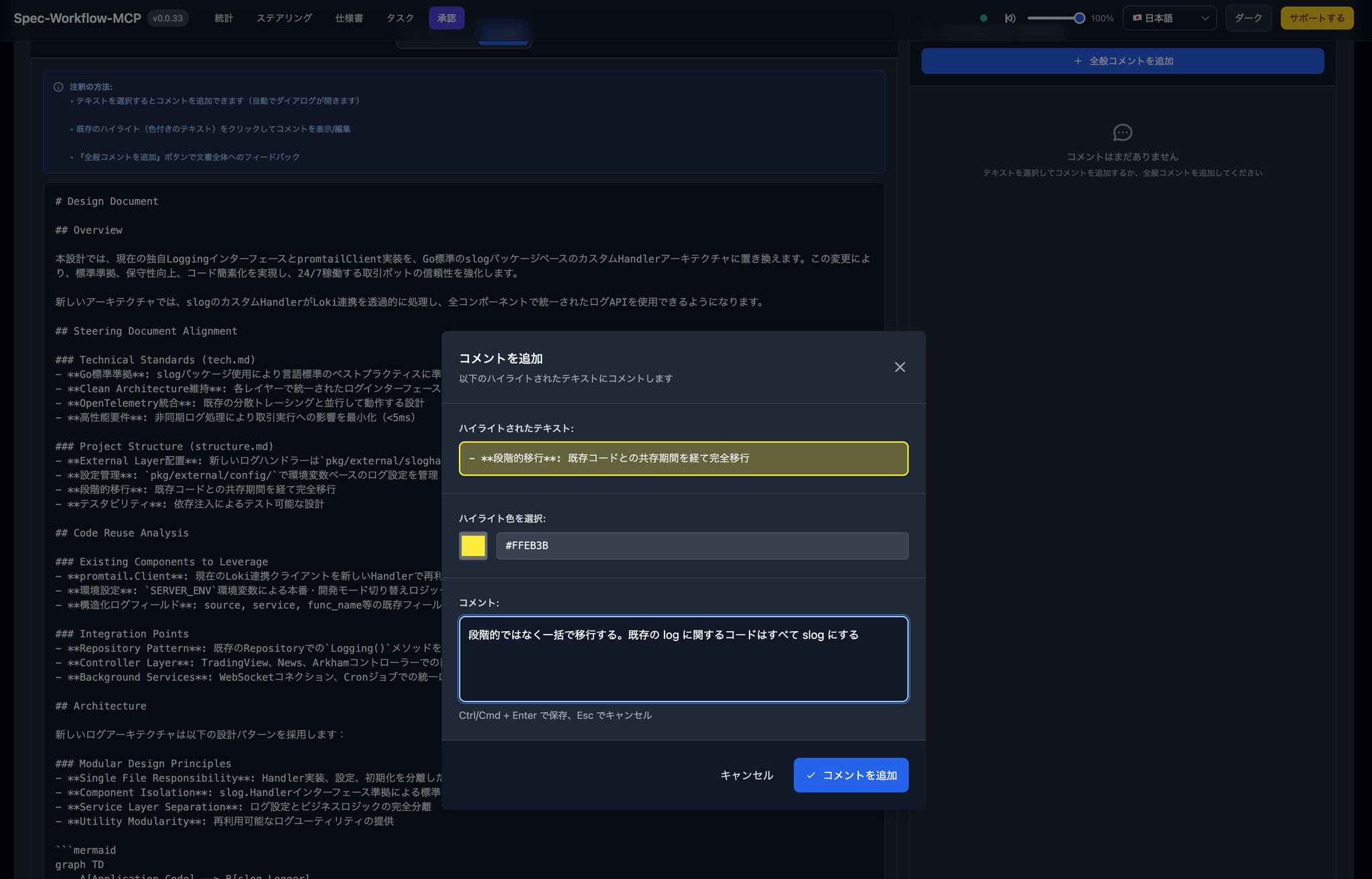The development experience with spec-workflow-mcp is great
#SRG(Service Reliability Group) is a group that mainly provides cross-sectional support for the infrastructure of our media services, improving existing services, launching new ones, and contributing to OSS.
This article introduces the appeal and usage of "spec-workflow-mcp," a tool that provides a comfortable development experience.
IntroductionWhat is spec-workflow-mcp?Why spec-workflow-mcp is greatKeeping your repository cleanIntuitive specification management via Web UIProgress management that is unaffected by Auto CompactComparison with KiroPractical: The development experience was very goodCreating a steering wheelCreating specificationsTask ImplementationIt's okay to stop it onceHow to get started nowsummary
Introduction
In recent years, software development using AI has rapidly become widespread, and our development workflow is undergoing a major transformation.
In this situation, "specification-driven development," which clarifies specifications and advances development in cooperation with AI agents, is attracting attention.
One such example is "Spec Kit" released by GitHub, which has a specification that automatically generates a large number of folders in the root directory of a project, and many developers were reluctant to use it because their repositories would be changed unintentionally.
In this article, we will introduce the appeal and specific ways to use "spec-workflow-mcp," a tool that solves these issues and enables more comfortable AI-assisted development.
What is spec-workflow-mcp?
spec-workflow-mcp is a structured specification-driven development workflow tool designed for AI-assisted software development.
Its biggest feature is that it acts as a Model Context Protocol (MCP) server.
This allows spec-workflow-mcp to provide powerful support for development workflows without polluting the repository itself.
It also provides a real-time updated web dashboard and a VS Code extension, allowing you to intuitively monitor and manage project progress.
Why spec-workflow-mcp is great
The main reasons why I rate spec-workflow-mcp highly are:
Keeping your repository clean
scriptsThis is a huge benefit when retrofitting existing projects or for teams that care about repository governance policies.
Intuitive specification management via Web UI
spec-workflow-mcp provides a web UI for managing all documents including requirements, designs and tasks.
Through this UI, stakeholders can review the document, highlight corrections they would like to see, and leave comments.
This makes it much easier to refine specifications and makes it easier to align understanding within the team and with stakeholders.
Progress management that is unaffected by Auto Compact
Some AI tools, like Claude Code, have a feature called "Auto Compact" that automatically summarizes past interactions when the context window approaches its limit.
While this is a useful feature, if it was triggered at the wrong time, it could cause important context to be lost and interrupt your work.
spec-workflow-mcp manages the progress of each task phase persistently as a file.
Therefore, even if Auto Compact has started, you can always check the most recent completion status of tasks and the next tasks to be implemented via the file.
This allows you to focus on development without having to be overly sensitive to Auto Compact.
Comparison with Kiro
I felt that spec-workflow-mcp had advantages over Kiro, another AI-assisted development IDE.
Kiro is very powerful, but requires you to launch a dedicated IDE.
On the other hand, spec-workflow-mcp is easier to implement because it can simply be added as an MCP server to an existing development environment.
Also, the peace of mind and convenience that file-based state management brings is something I personally feel is superior to Kiro.
Practical: The development experience was very good
We followed the spec-workflow-mcp workflow from requirements definition to design, task decomposition, and implementation, and the development experience was impeccable.
The Web UI makes it easy to see changes to specifications and check progress, and we feel that collaboration with the AI agent went very smoothly.
Since I need to use MCP, I have a custom slash command in Claude Code.
The code in the screenshots below is from a personal repository.
Creating a steering wheel

Creating specifications
Unless the user approves, they will not be able to proceed to the next step.

If you comment on the parts you would like corrected like this and click "Request corrections," they will polish it up for you.


Task Implementation
Once design → (approve) requirements → (approve) tasks (approved) is complete, we move on to the implementation phase.
The task phases are also managed in a file, so it would be fine to auto-compact them, but I tend to stop the processing every time a task is completed (it's a matter of preference).
mcp__spec-workflow__manage-tasks
It's okay to stop it once
/spec:implement ~
How to get started now
Deploying spec-workflow-mcp is very easy. If you have a Node.js environment, you can start the server with the specified project path by simply running the following command:
summary
spec-workflow-mcp is an incredibly powerful tool that elegantly solves the challenges of specification management, progress tracking, and collaboration in AI-assisted development.
It keeps your repository clean while providing an intuitive UI and robust progress tracking, allowing you to focus on more essential work.
In a future where writing code alongside AI will become the norm, I believe this tool has the potential to become the new standard for many developers.
SRG is looking for people to work with us.
If you are interested, please contact us here.
